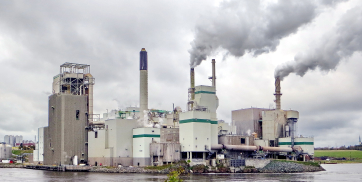A cursory comparison of newly proposed methane rules in Canada and the United States for the oil and natural gas industry.
New regulations? What do you mean?!
Methane emissions from the oil and natural gas (O&G) industry are no cause for alarm. Natural gas, which consists primarily of methane, is routinely emitted both intentionally and unintentionally during O&G production, processing, and transportation. However, methane is a greenhouse gas, and decarbonizing our energy systems means that we must prevent it from entering the atmosphere.
New regulations are coming in both the United States (US) and Canada to limit – and nearly eliminate – methane emissions from the O&G industry. This month, the US Environmental Protection Agency (EPA) issued a Supplemental Proposal to improve their November 2021 draft. The rule is expected to achieve methane reductions of 87% relative to 2005. The day before the Supplemental was released, Environment and Climate Change Canada (ECCC) proposed a regulatory framework to achieve a 75% reduction in O&G methane emissions by 2030 relative to 2012.
The purpose of this article is to compare (at a high level) elements of the proposed regulatory pathways in Canada and the US. Note that the Canadian proposed framework is not a draft rule, so details are sparse at this time. Please get in touch if you find any errors or if you have questions.
How much will these regulations cost you?
The big question on industry’s mind is how much these new regulations are going to cost, and how they align with existing non-regulatory strategies, including targets and voluntary initiatives. Highwood has proprietary tools that can automate these calculations in both the US and Canada under a broad range of user-specific assumptions and scenarios. Please get in touch to learn more.
| Theme | ECCC Framework | EPA Supplemental |
| Destruction equipment | Must achieve ≥ 99% efficiency. | Must achieve ≥ 95% efficiency. |
| Routine flaring (associated gas) | Prohibited at oil sites, must use enclosed combustion. | Must route gas to sales line. If not feasible, beneficial on-site use permitted. If not feasible, flaring (≥ 95% efficiency) allowed. |
| Conservation equipment | Must achieve ≥ 98% efficiency. | Must achieve ≥ 95% efficiency. |
| Fuel combustion | Must achieve ≥ 95% efficiency. | Not specified. |
| General venting | Oil facilities emitting > 5 m3/day must eliminate venting via conservation. | Not specified. Partially addressed via 100 kg/h minimum rate for super-emitter response program. |
| Pneumatic controllers and pumps | All devices must be non-emitting or captured. | All devices must be non-emitting. |
| Leak detection – conventional | Monthly inspections at all sites – not conditional on site type. | Up to monthly AVO and quarterly OGI/M21, depending on site type. Only quarterly AVO at “small” single-well sites. |
| Leak detection – alternative | Not specified. Expected to be allowed. | Streamlined approvals based on technology performance. Survey frequency based on 90% probability of detection limit. |
| Leak repair | Immediate, but up to maximum of 30 days if infeasible. | Repair within 15 days (AVO). First attempt within 30 days for OGI/M21 and final attempt within 30 days of first attempt. |
| Compressor engine exhaust | Emissions cannot exceed 1 g/kWh methane | Not specified. |
| Centrifugal compressors | Must be < 8.4 m3/h for new installations and < 20.5 m3/h for existing installations (or < 40.8 m3/h if > 5MW).* | Wet seals vent capture of 95%. Dry seals must be < 3 scfm. |
| Reciprocating compressors | Must be < 0.06 m3/h/throw for new installations and < 1.38 m3/h/throw for existing.* | Maintain flow rate < 2 scfm. |
| Planned blowdowns | Must be captured or destroyed. | Not specified. |
| Glycol dehydrators | Emission reductions of 95% or gas capture. | Not specified. |
| Liquids Unloading | Capture and recovery techniques or install and use a control device to achieve at least 95% control. | Zero methane and VOC emissions. If unsafe or infeasible, use best practices to minimize. |
| Storage vessels | Not specified. | 95% methane and VOC reduction for tanks or tank batteries > 6 tpy (new) or 20 tpy (existing) potential to emit. |
| Completions | Not specified. | Use of Reduced Emissions Completion (REC) required. Use of completion combustion device required where safe. |
| Super-emitters | Not specified. | A super-emitter response program is implemented for sources ≥ 100 kg/h. |
* Unchanged from existing regulation.






